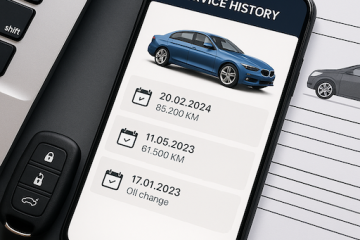Market Insight: Rolling with the Punches

One Auto API CEO Mark Fretwell explores how recent developments are testing the automotive industry’s mettle once again – shaping the future of finance, transparency, and electrification.
The automotive industry is no stranger to a fight.
With each new round, different challenges emerge, demanding agility, resilience, and an unwavering ability to bob and weave.
Just as the sector seems to find its footing in one corner, another blow lands – this time from a shock Court of Appeal ruling on commission disclosures and an Autumn Budget packed with shifts that shake up the landscape once more.
But from what I’m seeing, the industry isn’t backing down.
Instead, it’s adapting, flexing, and stepping up to meet the demands of a complex regulatory and fiscal environment.
The resilience to take these punches, recalibrate, and keep moving forward speaks volumes about the sector’s enduring strength.
Surprise Regulatory Shake-Up
One of the more significant blows to strike the automotive finance sector recently has been the Court of Appeal ruling, which determined that motor finance brokers must provide full disclosure on commissions when arranging car loans.
This decision confirms that brokers hold a fiduciary duty toward their clients, requiring them to prioritise the customer’s best interests and avoid any conflicts.
As part of this responsibility, brokers are now forbidden from accepting commissions from lenders without the customer’s “fully informed consent”.
The Court’s decision, which stretches beyond business-to-consumer contexts to also include fleet and leasing arrangements, has taken the industry’s disclosure standards to a level few anticipated.
This judgement had an immediate impact.
With businesses scrambling to comply, temporary measures are helping to keep the wheels turning, but many questions remain unanswered.
And, as companies work to meet these new requirements, the potential for disruptions in automotive finance looms.
The ruling highlights an increased likelihood of claims against lenders, especially as the decision may apply beyond dealerships. Some lenders are already making additional provisions for potential claims, which could reduce their appetite and capacity for lending.
For smaller dealers, this shift could affect the feasibility of offering in-house finance, potentially leading some to leave financing arrangements to customers.
Already, some retailers have shown that bypassing in-house finance can be a sustainable and profitable model, focusing solely on the vehicle transaction and directing customers to third-party finance options.
As regulatory demands increase, we may see this approach gain traction, particularly among independent and smaller dealerships.
And, in the longer term, once we navigate the confusion, a shift towards full transparency has to ultimately prove advantageous.
By fostering higher consumer trust and reducing ambiguity, the industry can avoid future disputes, laying a foundation for a more resilient finance model.
Significant wins for consumer confidence and industry integrity alike.
Autumn Budget 2024: A Missed Opportunity?
The Autumn Budget introduced £40 billion in new taxes and committed to improving public services, but did the government miss a golden opportunity to accelerate the EV transition?
While the Autumn Budget document recognises EVs as “crucial to decarbonising transport and supporting growth across the UK” actual measures potentially fell short of many expectations.
The manifesto commitment to reinstate the 2030 ban on new ICE vehicles was upheld, with confirmation that all new cars and vans in the UK will be zero-emission by 2035.
However, questions remain about how to reach this target.
For example, £200 million has been earmarked for EV charge point rollout in 2025-26, including support for local authorities to install on-street charge points across England.
While welcome, is this funding enough to address the current infrastructure challenges?
The preservation of salary sacrifice schemes is another positive, providing a valuable route for new EV sales. However, the used EV market was notably overlooked, receiving no significant support or incentives.
Stick or Carrot?
Instead of providing new incentives for EV adoption, the government seems to favour disincentivising ICE and hybrid vehicles.
Plug-in hybrid (PHEV) drivers, for instance, will see substantial increases in Benefit-in-Kind (BIK) rates, as their vehicles are reassessed based on CO2 emissions alone, aligning rates more closely with those of ICE vehicles.
Similarly, from 1 April 2025, VED first-year rates will increase to further disincentivise ICE vehicle purchases. While zero-emission vehicles will pay just £10 in their first year, cars emitting over 76g/km CO2 will see doubled rates for 2025-26.
These changes illustrate the government’s “stick” approach to steering the market towards greener choices, leaving some wondering if a few more carrots would make for a smoother transition.
Double Trouble for Double Cabs
Another Budget shift targets double cab pickups, which will now be classified as company cars rather than commercial vehicles unless they meet specific load-carrying requirements.
Previously, these vehicles – popular with tradespeople and rural business owners – qualified for lower BIK tax rates if they had a load-carrying capacity over one tonne, offering a practical work-family vehicle option with reduced tax liability.
Under the new rules, double cab pickups that don’t meet the load-carrying threshold will face significantly higher BIK tax rates, similar to high-emission SUVs.
This change could impact many small business owners and self-employed individuals who rely on these vehicles for both work and family use, potentially leading to a surge of these pickups entering the used market as owners re-evaluate their tax obligations.
From Showroom to Boardroom: Managing Increased Costs
The Budget also introduced changes to employers’ National Insurance contributions, increasing operational costs for automotive businesses, especially large manufacturers and dealerships with substantial workforces.
These adjustments could further squeeze profit margins in an industry already contending with inflation and rising operating expenses.
To weather these pressures, companies may need to accelerate productivity-boosting measures such as automation and digital tools, helping them manage these rising costs and keep profitability on track.
Agility, Transparency, and a Look Ahead
The automotive industry continues to evolve, guided this time by both judicial and fiscal pressures. From the Court of Appeal’s call for enhanced transparency to a Budget that leans on disincentives rather than incentives, the road ahead is complex.
The coming months will test our sector’s resilience and adaptability.
But, like a seasoned boxer, the industry has shown that it can absorb the hits and remain standing.
With an approach grounded in transparency, data-driven decisions, and an emphasis on quality, we can successfully navigate these changes.
Each new challenge underscores the industry’s strength – not just to fight, but to win.
Here to Help
At One Auto API, we’re committed to supporting our partners through this evolving landscape, offering insights and tools to help them thrive. Whether navigating new finance regulations or adapting to market shifts, we’re here to help you succeed in a changing world. Book a free 30-minute consultation and discover how we can help you prepare your business for the future.


